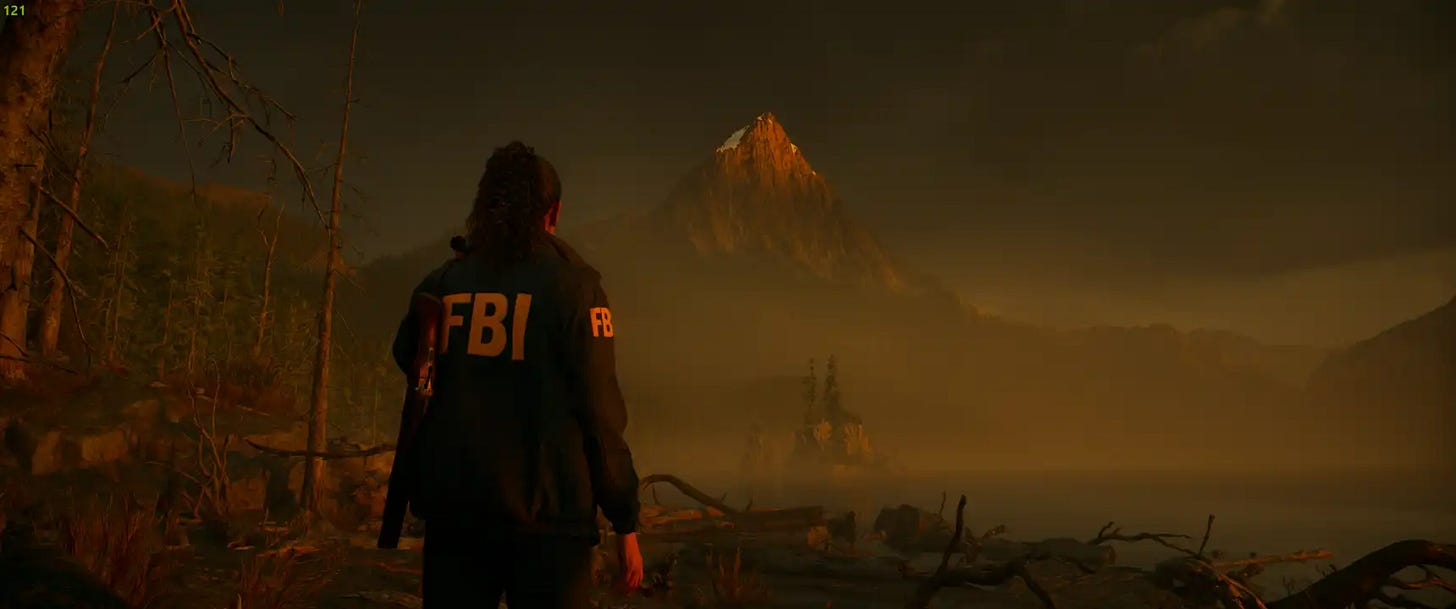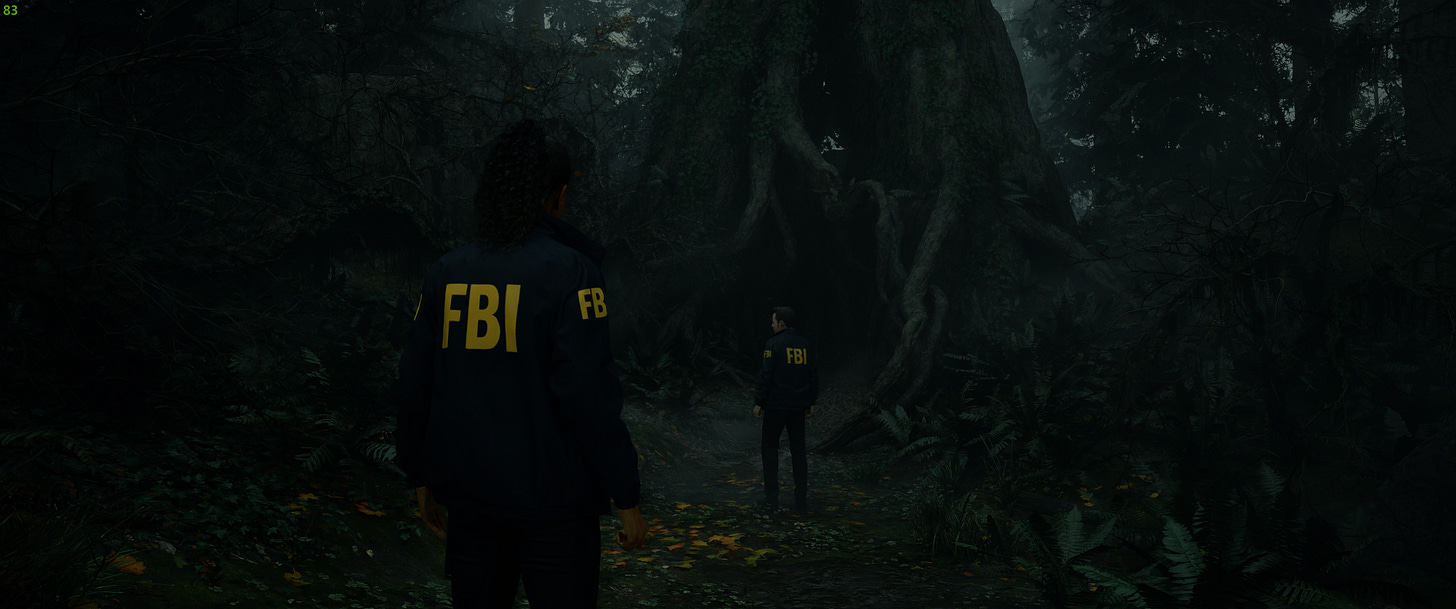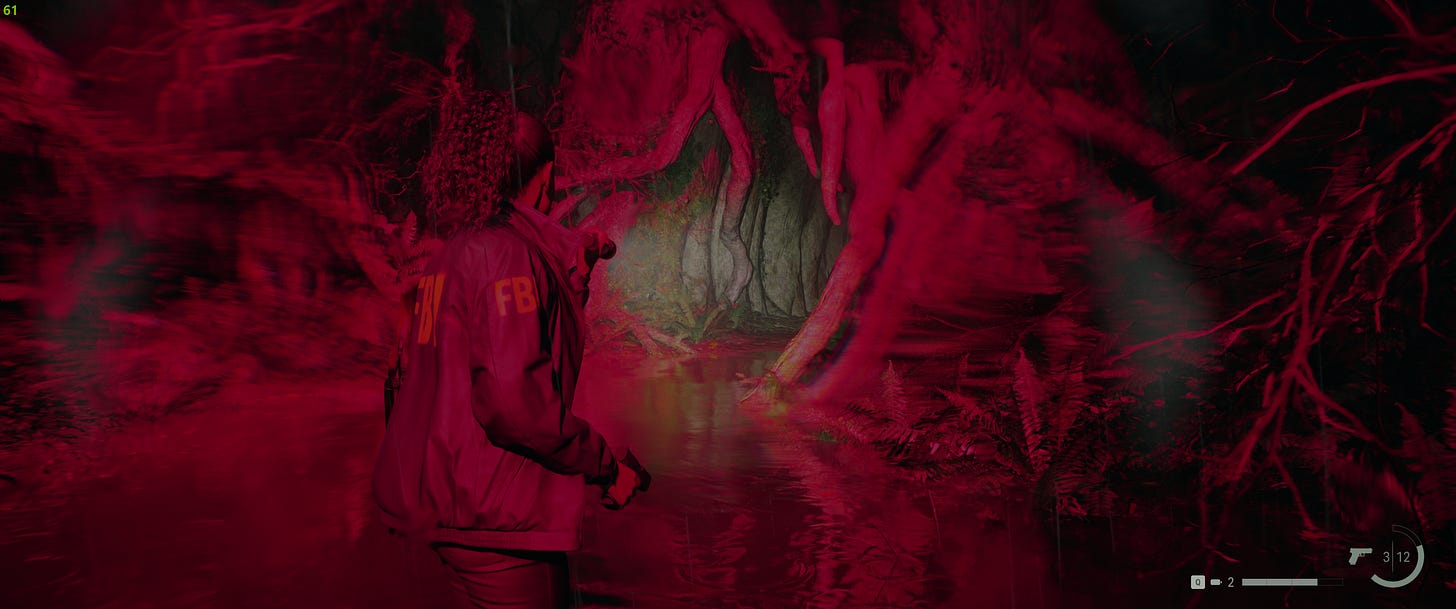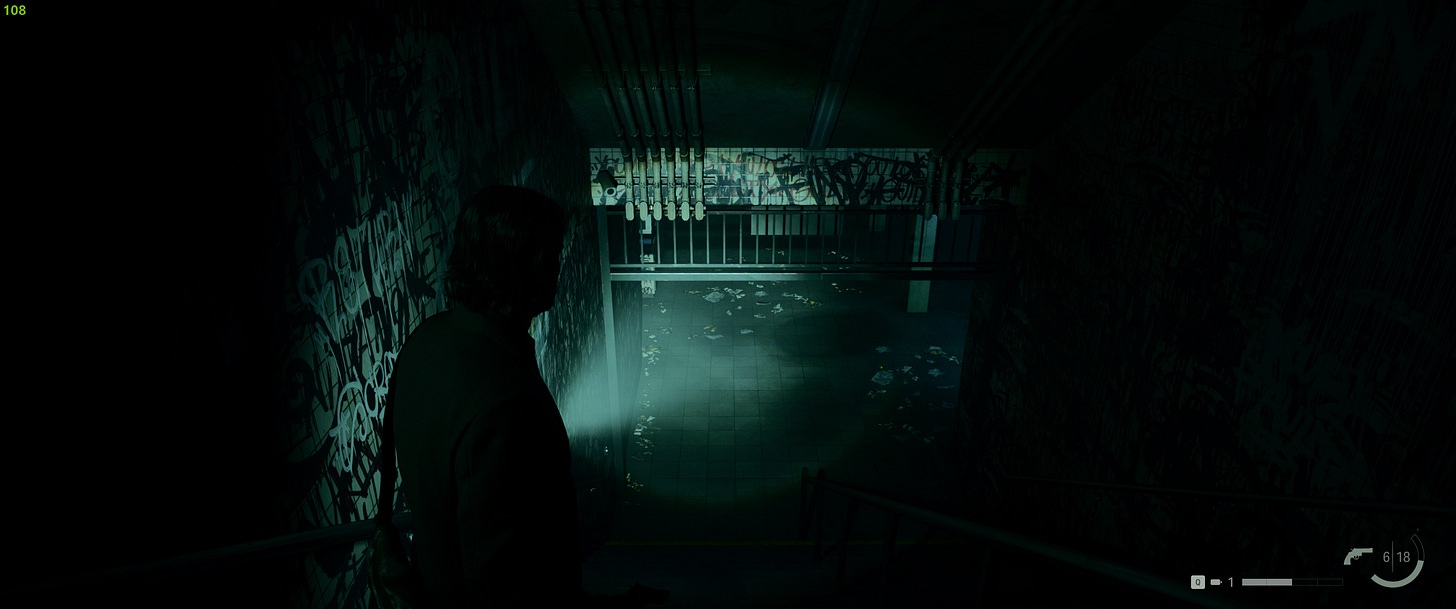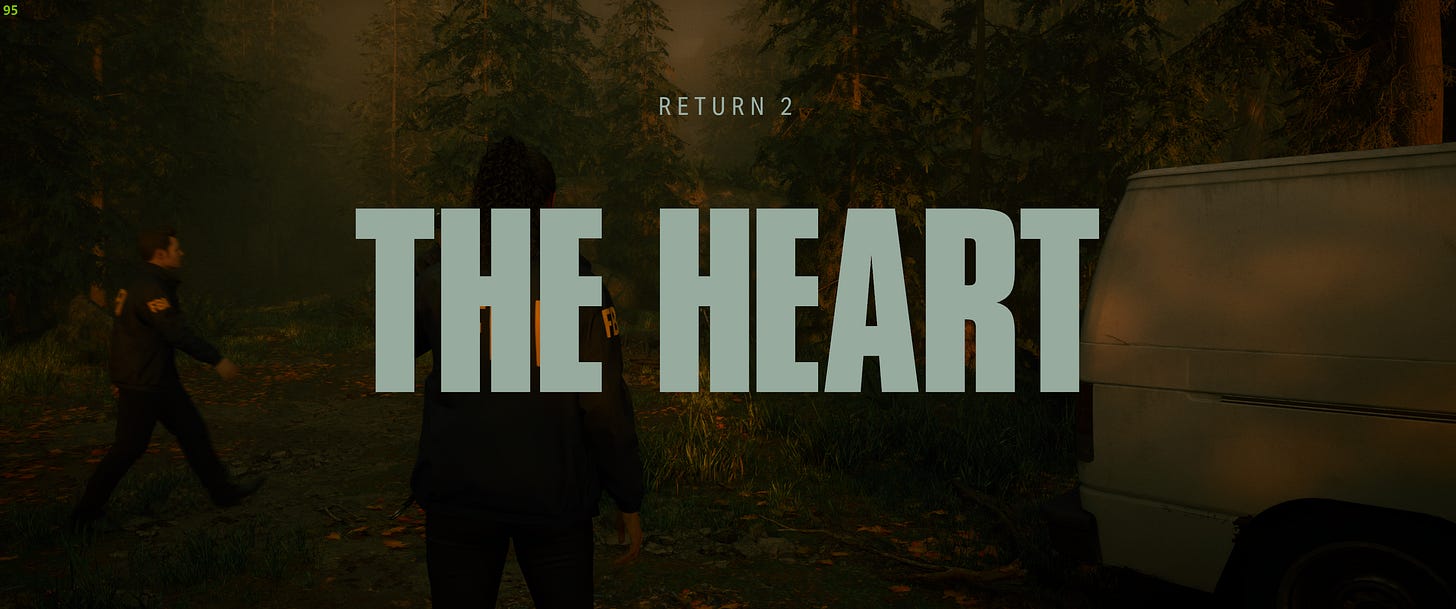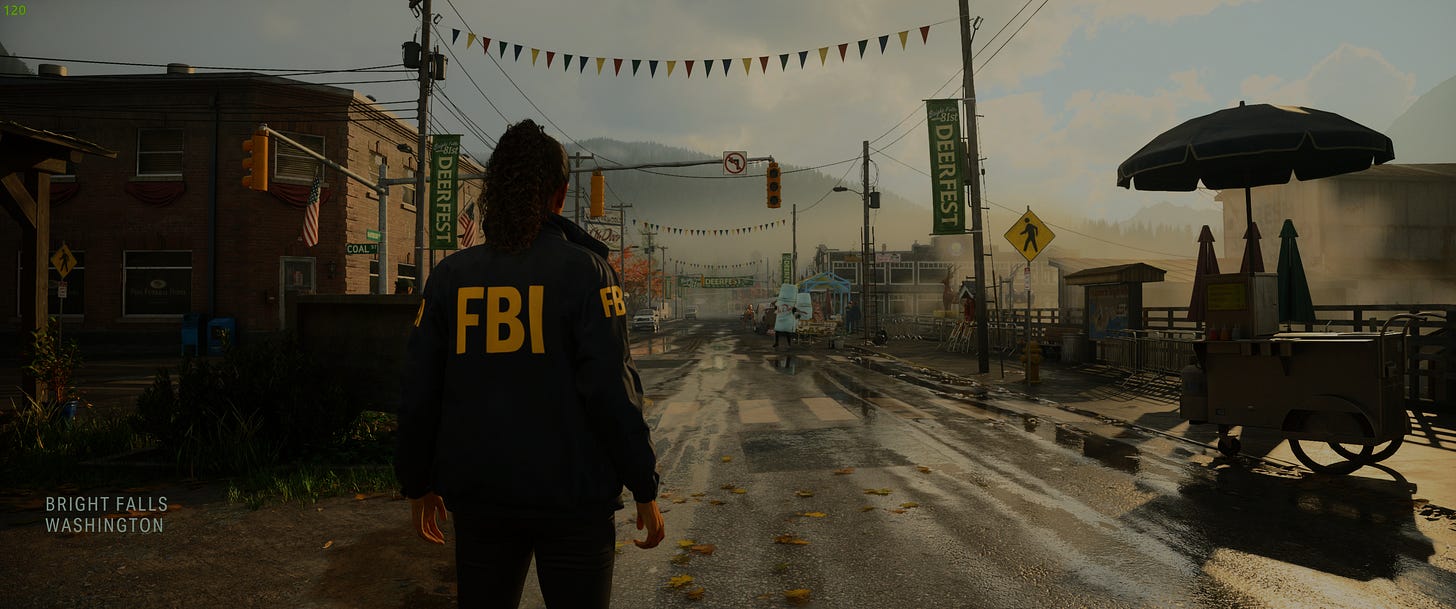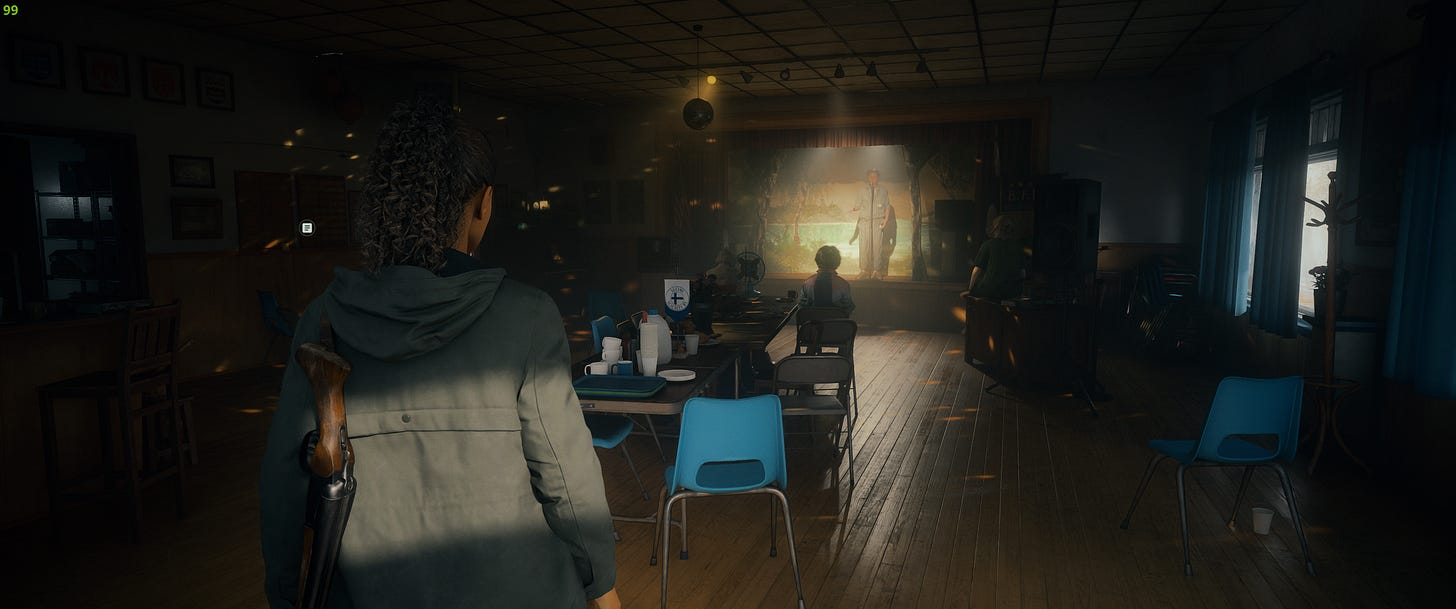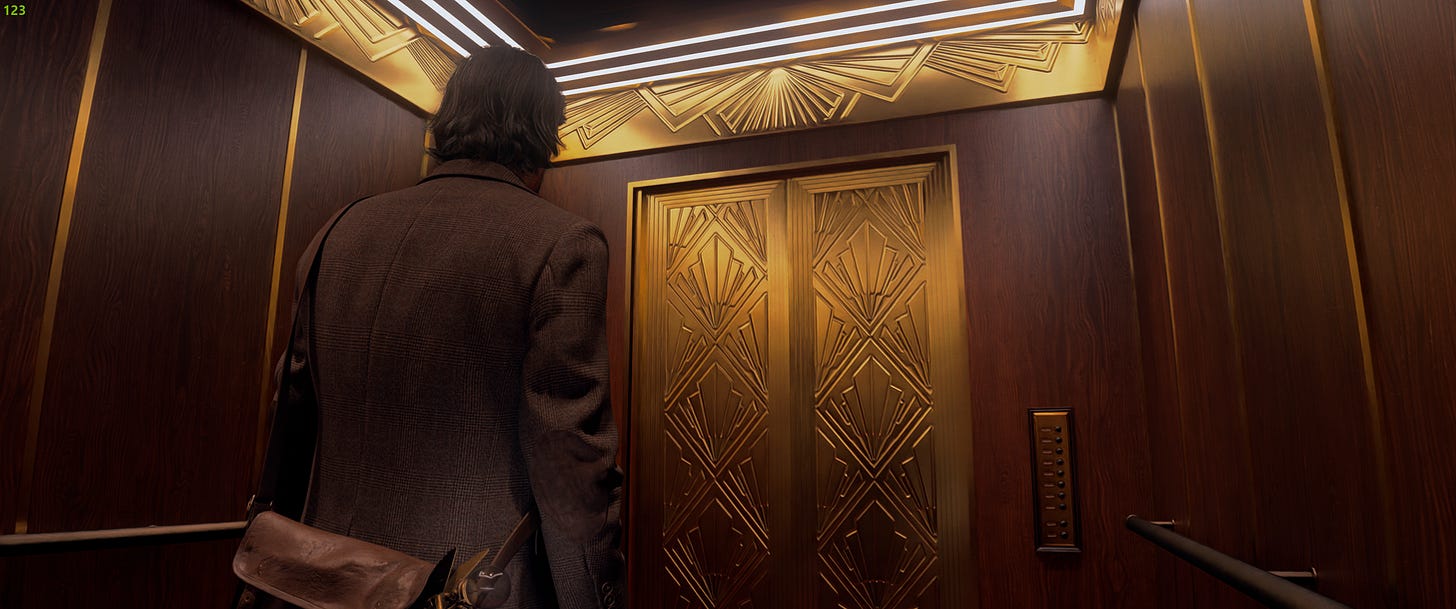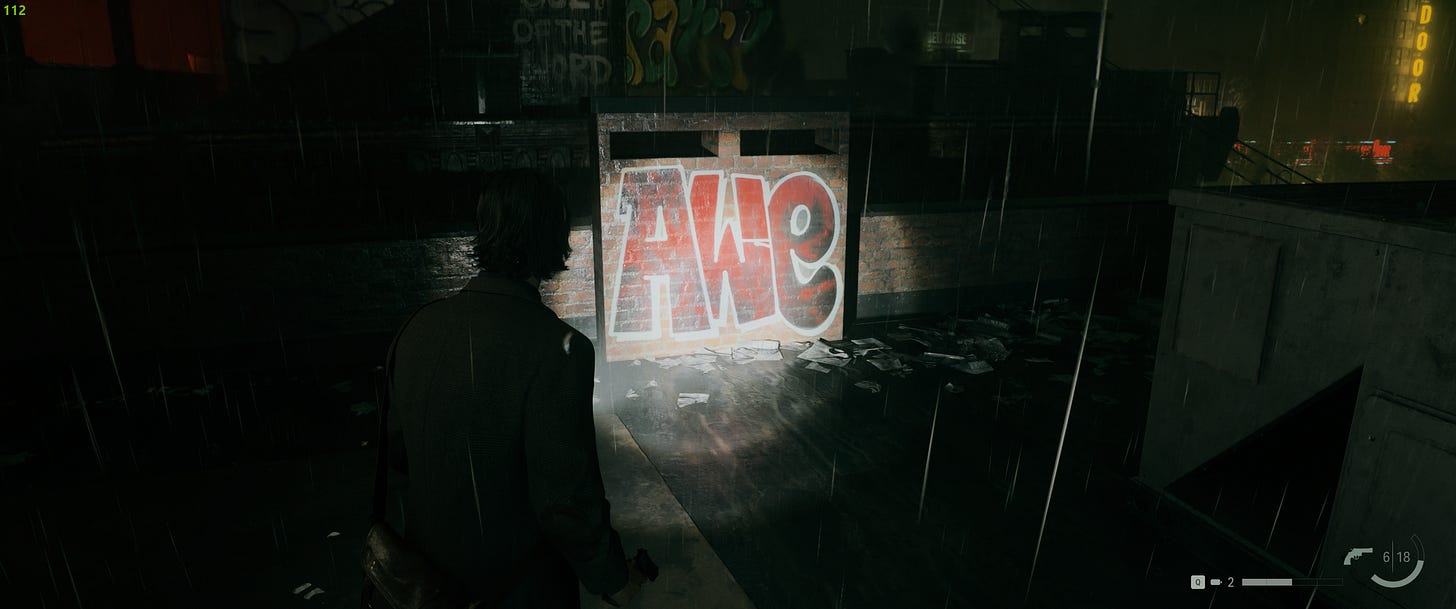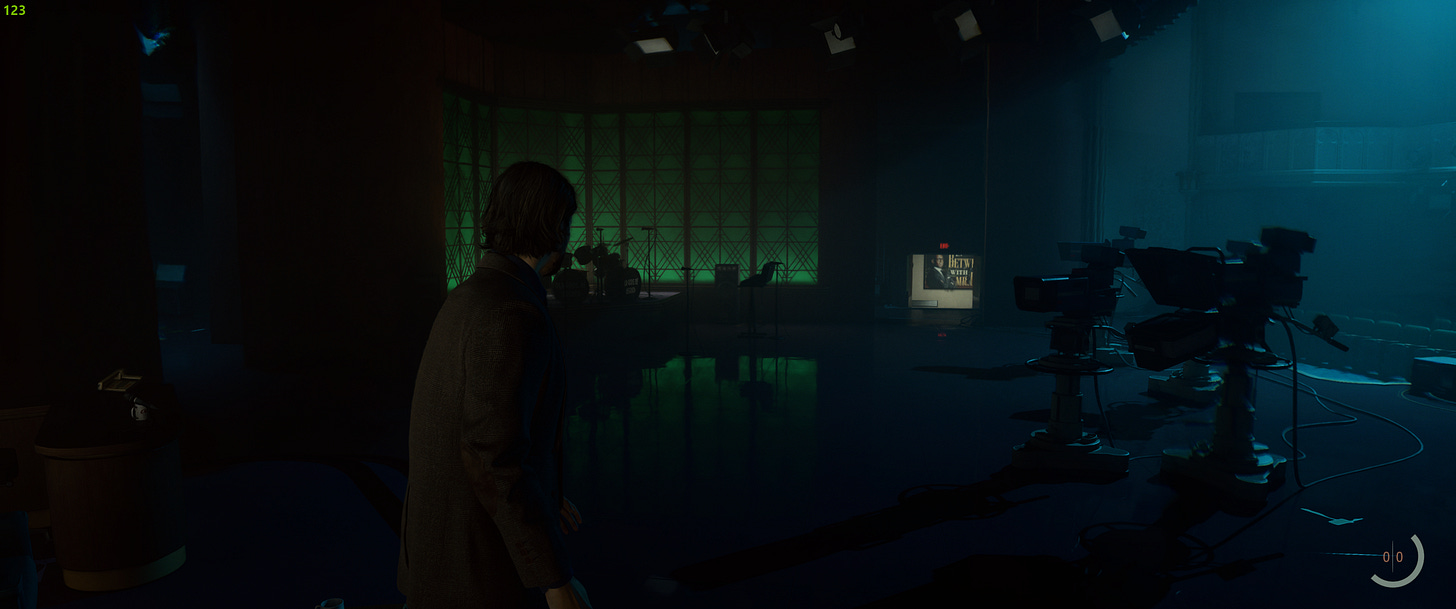Alan Wake II
Wake. Wake. Wake.
After rolling credits on Alan Wake II, I can say with full confidence that Remedy has reached a Golden Era of game development that I hope never ends. The experience they crafted for this game rocked me to my core almost exactly as Control did when I played it for the first time several years ago. There were so many fresh and novel game design ideas that successfully pulled me deeper and deeper into the story that the team very obviously put their whole heart into. While this may be the easiest recommendation I make all year, the game is not perfect. Oddly enough, that only makes me more excited, as I start to fantasize about the obvious areas of growth future projects can capitalize on.
There are dozens of places I could start this review, but let’s eat our dessert first. Alan Wake II is gorgeous. It’s a feast for the eyes. I recently built a PC after exclusively console gaming for over a decade, and this was the perfect game to justify the purchase. The textures and coloring of the people and environment do an incredible amount of heavy lifting in immersing the player in the game. Everything looks detailed and moody, almost as if you’re consuming the video game equivalent of an HBO show. The notoriously bad plastic hair texture that single-handedly breaks immersion in most AAA games is nowhere to be found, and instead, you get incredibly believable character models that closely resemble their live-action counterparts.
The astounding environmental design, sound design, and visual effects resulted in this being one of the scariest games I’ve played in some time. Hearing shadows shout-whisper “WAKE” from behind me or hearing a Taken ramble nonsense just off-screen in the dark forest had me shook. The game is not overly traumatic or anything; it’s mostly a master of building tension and doubting what lies right out of sight. It makes casual combat encounters so much more nerve-wracking because you never know how many enemies could be coming, if it’s worth it to stay and fight, or what my waiting for you if you plunge deeper into the unknown. This is just flowery language to explain how this game (that’s probably not all that scary compared to other games) turned me into a big baby.
But the real star of the show is the lighting. Very early on you get a taste of the sun peaking through the mist and the trees to create one of the most beautiful passive lighting effects I’ve ever seen in a game. No matter the time of day or location, the lighting in this game delivers a 10/10 performance and completely transforms the mood of the game. I’m not sure what sorcery Remedy did on their engine to make this all possible, but I have no issue saying that is one of the main factors contributing to why I found the moment-to-moment gameplay to be such an enjoyable experience.
While the visuals of Alan Wake II were an incredible triumph, the real reason many will be attracted to this franchise is, and always will be, the narrative. The story of Alan Wake is a mind-bender, but Remedy does a lot of work to make it manageable. The most obvious strategy is to break up the game into two separate (but intertwining) campaigns. At any given time, you are at liberty to play as one of two main characters: An FBI detective named Saga Anderson investigating Bright Falls murders, and the writer Alan Wake stuck in a faux New York City. Both campaigns have their strengths and shortcomings, but overall I think that together they create one of this year’s biggest heavyweights in game direction.
The reason I fell in love with the brand-new IP that was Control was due to the expert world-building. Every piece of dialogue, every little visual easter egg, and every document you found all fed into this cycle of questions and answers that ultimately made up the world of the game. Alan Wake II is no different, and it’s the reason I love it so much. The game feels like navigating a maze. Information is presented out of order, in the form of riddles, or in a misleading fashion, and the game seems like it’s pushing you to feel constantly lost. The exciting part is that most of the answers are there. I collected pieces of Alan’s manuscript or talked to certain NPCs as the game progressed and started to craft my own personal theories as to what was going on, and eventually, a lot of those theories were validated. I felt rewarded for following the clues and throwaway moments from start to finish, and not only that, but I even had a few more theories that were left unanswered, which I’m excited to expand upon more in future content.
The character acting only added to this. Having characters that are not only putting on pretty strong voice-acting performances but are also doing live-action clips as well is incredible. The way these two mediums were seamlessly woven together helped produce a result unlike anything I’ve ever experienced in games. While I felt like the live-action uses got a little heady at times, I still really appreciated that this game really took the live-action element that has always been present in Remedy’s games to the next level.
While the story itself was pretty enthralling from start to end, the gameplay elements tied to it were hit or miss. Saga’s mind place case board was cool at first, but as time went on, it seemed like a tool to help the struggling player as opposed to being a key mechanic. Oftentimes times I would visit the board only to find out that I was several steps ahead of where the game wanted me to be. Other times, I was forced to interact with it to further the story, even though I had already figured out what I needed to do without it. It’s a hard mechanic to do right when it is utilizing information you’ve already gathered in the game. In a way, I was able to utilize my own mind-place to solve the mysteries of the game instead of using Saga’s, which is pretty funny to think about, but also sad from a gameplay perspective.
Alan’s plot board, on the other hand, was genius. Alan would actively affect the gameplay by making decisions in his writer’s room. Almost every “scene” had multiple options that slightly switched up reality, making for some really interesting gameplay moments. I really wish Saga had a similar gameplay mechanic where the choices weren’t spoon-fed to you and you had to do some level of experimentation or deduction.
That being said, out of the two campaigns, I enjoyed Saga’s the most. The comparisons to True Detective were not unfounded, and I would even say that they nailed the inspiration. Despite the lack of utility in the case board, I still had a blast playing detective. The locations and the people within them felt incredibly authentic to the world that was established. I was filled with immense dread as I navigated the dark and empty Coffee World theme park. I was overcome with intrigue as I tried to unravel the lore behind a familiar cast of characters, and there was a subtle comfort I got knowing I had my partner Alex Casey with me on the investigation. Even without the supernatural elements, I think Saga’s story could be turned into a compelling standalone game with how well the town of Bright Falls was fleshed out here.
Taking a break from the narrative aspect of the game, I would like to pore over the gameplay a bit. I think it’s fair to call the combat and general gameplay serviceable. I think in terms of the survival horror genre, the balance of fight or flight when it comes to the enemies might be right up there (but below) Resident Evil. There was this perfect feeling of stress that almost any encounter could create. For most of the game, there is this steady push and pull of resources that requires you to think twice about engaging in any combat encounter. When you do, the weapons pack a pretty satisfying punch, and combined with the excellent gore detail on the enemies, it really feels like you’re doing some damage.
Alas, everything is not all sunshine and rainbows. There are dozens of places where the combat can be improved. I felt like the flashlight supercharge was a bit finicky, which does not help in high-stress scenarios. Also, just the general dodging and movement controls felt a little off. There are a few scripted combat situations in the game that are pretty tough, and I would argue that a majority of that difficulty was due to me fighting the controls, fumbling through my inventory, and not being able to effectively track the enemy. Fortunately, combat mostly takes a back seat in this game, giving you plenty of time to prepare and strategize around most of the smaller encounters. My foolproof strategy was to usually book it past any Taken I could.
Despite there being numerous places of improvement on both the narrative and gameplay side, Alan Wake II was an experience I will not soon forget. It threw me into this world that only got more interesting with every additional level, and it’s a world I can’t wait to return to for the DLC. Control and Alan Wake are becoming the ultimate intertwining series that people have always begged for from the Marvel franchises, and some may look at this game the same way people look at that original tease of Thanos back in the early MCU days. In a period of gaming where many of our titles are sequels or remakes, it is incredibly encouraging to see Remedy take this chance to completely redefine what we think about when we envision the Alan Wake franchise. The game features tons of off-the-wall choices that are blended with tried and true survival horror game design. The end result is a product that feels fresh and inventive, which I have no doubt will not just push future games in the genre forward but gaming as a whole.


